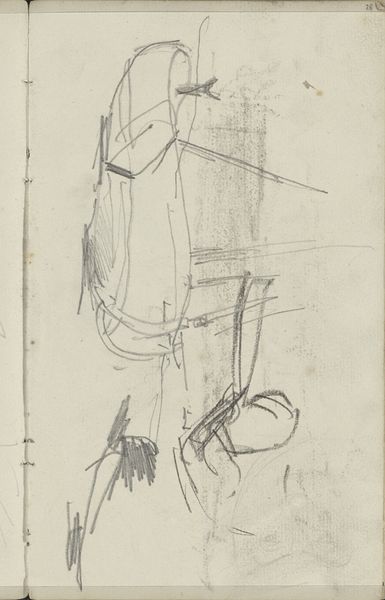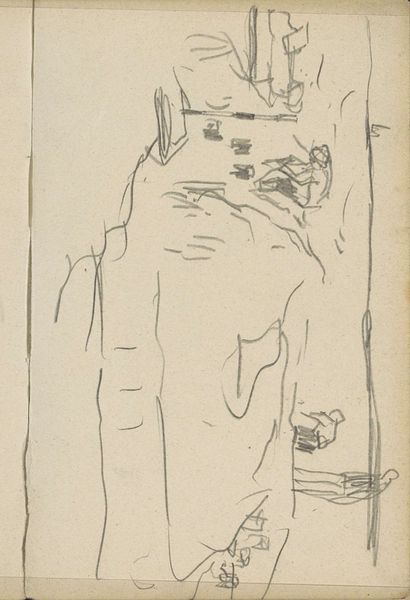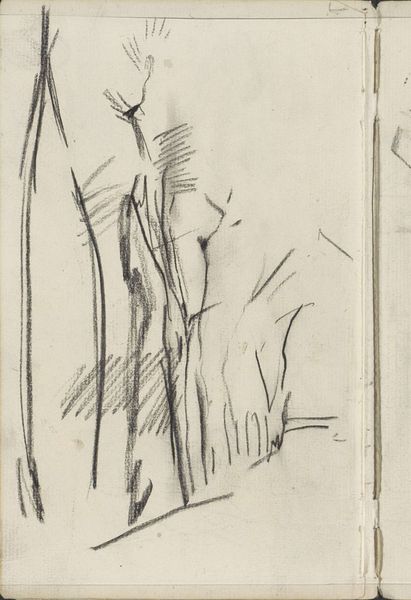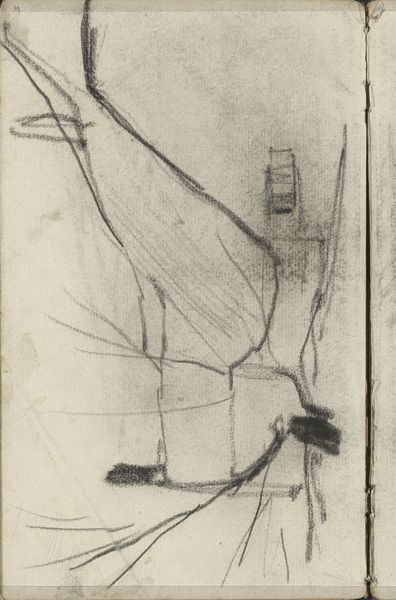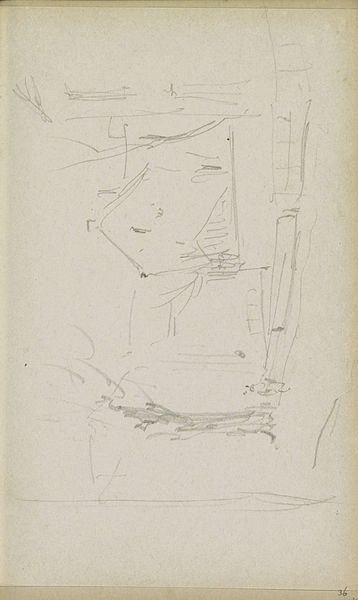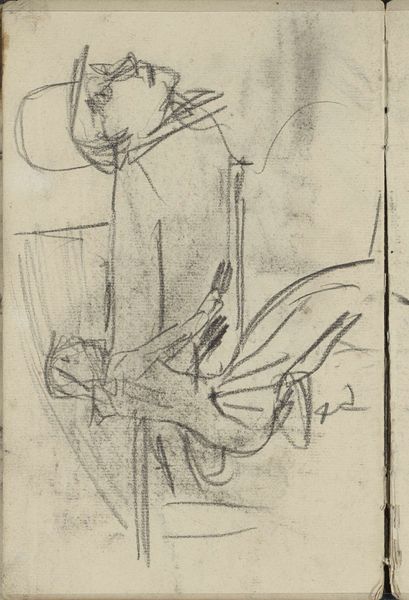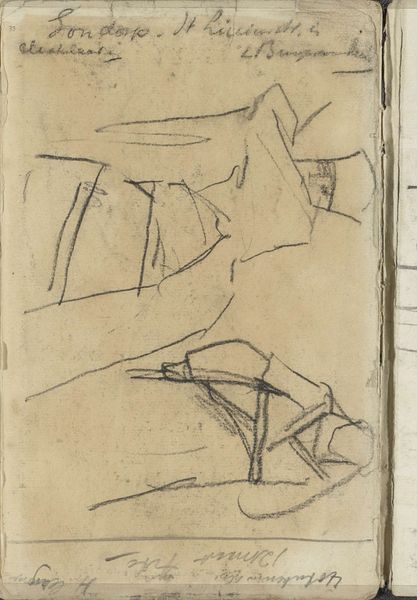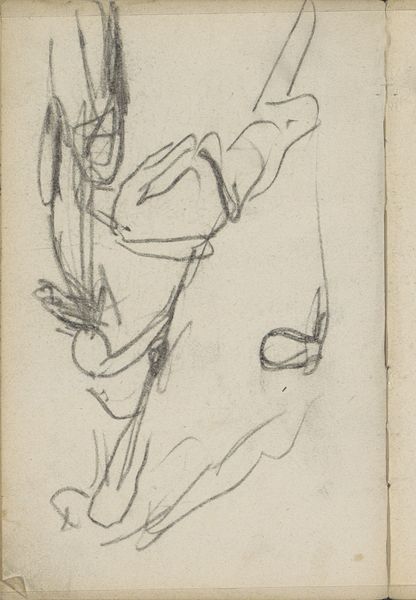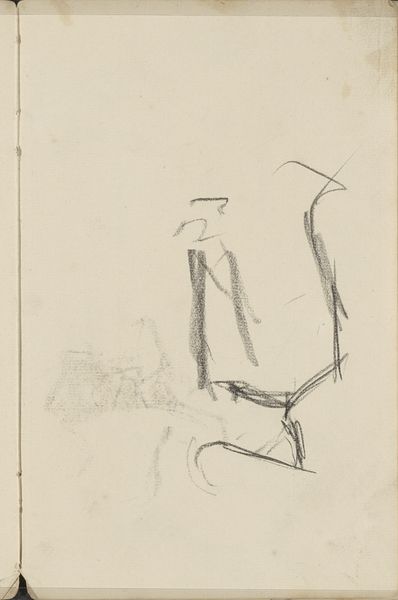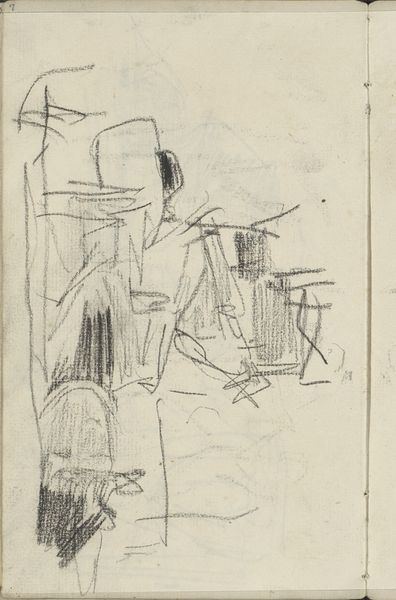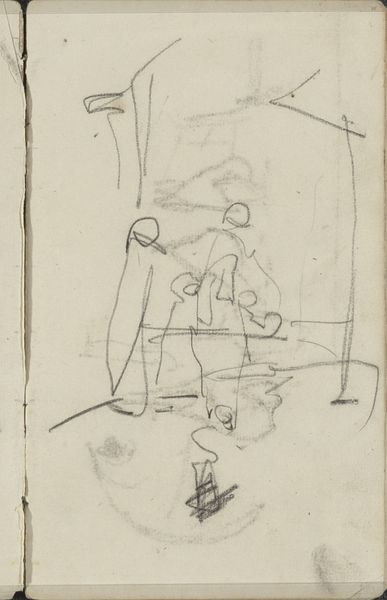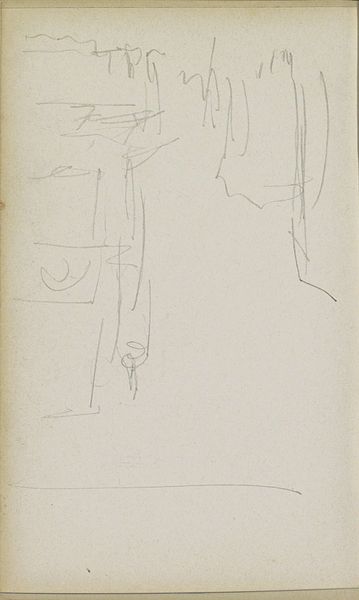
Copyright: Rijks Museum: Open Domain
Curator: Here we have "Standing Woman and a Sitting Figure" by George Hendrik Breitner, likely created between 1886 and 1923. It's a pencil drawing on paper, currently residing here at the Rijksmuseum. Editor: It feels like a fleeting moment, captured with such deliberate economy. The lines are so sparse, yet they suggest form and presence quite powerfully. There is almost a kind of voyeuristic atmosphere in these furtive renderings of female form, suggesting the marginal status of women’s lives and labour in 19th century Dutch society. Curator: Breitner, you see, was deeply embedded in the cultural fabric of Amsterdam. He captured street life, working-class individuals, often focusing on women in their daily environments. He engaged in debates about the purpose and politics of art during the era. Editor: Absolutely, this artwork goes beyond just depicting people; it hints at a much wider socio-economic world that the figures inhabit. The sketchy quality adds a rawness, as if we're glimpsing into the private existence of the models. Consider, for instance, what their access would or wouldn’t be to the art institution we find ourselves within. Curator: Breitner was known to work from photographs in order to produce these figures en masse. This brings a critical tension between "capturing" and exploiting subjects of these settings. In fact, as photography became accessible, it enabled him to represent a realistic depiction of Amsterdam, but we need to be mindful about how his paintings fit into those cultural dynamics. Editor: I completely agree. We must look into how the power relations are rendered through the sketch medium. While ostensibly Breitner is just depicting regular women, what part does the art play in valorizing his own male gaze? There’s such intensity in the work. Curator: Indeed. It provokes reflection on art's function, then and now. His art encouraged new dialogues about the role of art within the construction of identity and its influence. Editor: And what it can unveil or obscure, through the deceptively effortless movement of a line on paper. It still resonates today. Thank you.
Comments
No comments
Be the first to comment and join the conversation on the ultimate creative platform.
